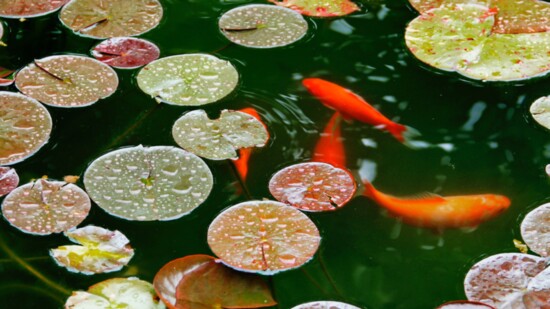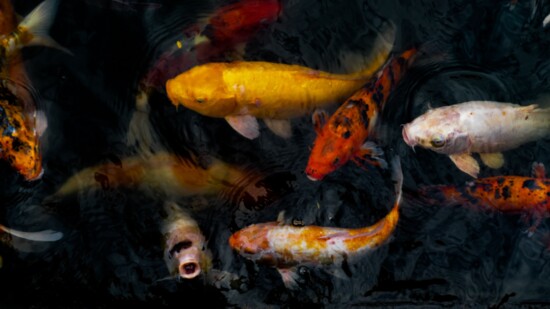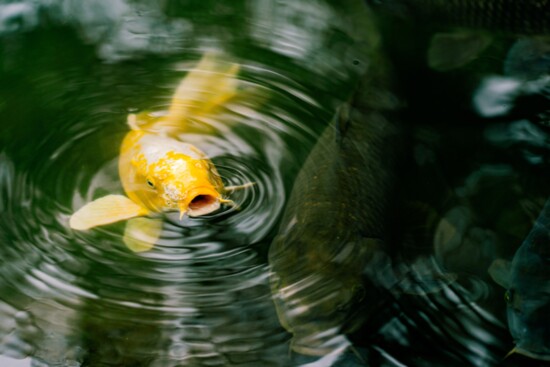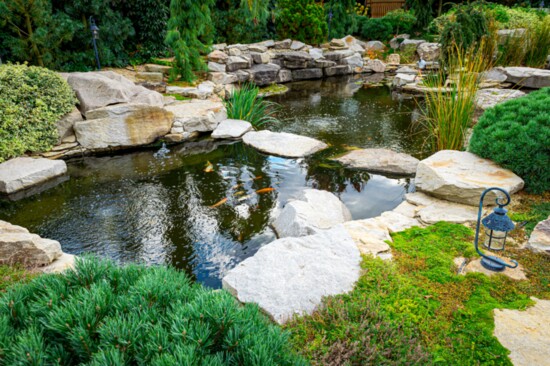The peaceful babbling of a waterfall cascading into a petite pond adds a getaway feel to an outdoor living space. At Aquatic Gardens of Ohio on South Main Street in North Canton, inside and out, you’ll find everything pond — plants, fish, supplies and deep knowledge by Brad Larson, owner and an enthusiast and expert. He grew up in the business, working alongside his father, Robert Larson, at his business — North Canton Pet Center. When his dad transitioned into selling pond supplies and fish under the name Lily Blooms, he grew the business to about 25 employees and was mailing water plants across the country.
In 2014, Robert sold Lily Blooms to Brad’s brother, Brett, and Aquatic Gardens of Ohio was born out of the Main Street location. Brad, who runs the store, has a passion for pond life. His senior year at GlenOak High School, he created a website to sell aquatic plants online.
With only a couple other pond-focused stores in Ohio, Aquatic Gardens is a gem and destination for those who are interested in creating and maintaining a unique pond environment.
At Aquatic Gardens, raised beds are filled with pondwater and an expansive variety of plants — floating and submerged. Lilies are available in seven colors, and Brad also offers bog plants for the pond perimeter: rushes, reeds, cattails and irises.
“We go through a lot of fish every year,” Brad adds, noting that goldfish grow 8 to 12 inches and are best suited for shallow ponds no deeper than 18 inches. Koi are much larger, 24 to 36 inches, and require a pond that is at least 3 feet deep.
Aquatic Gardens is known for its decorative fish — koi with violet, green, yellow, red, orange and blue coloring. “There is also a wide range of colors and scale types,” Brad points out.
Goldfish and koi are bottom feeders and need to “learn” to swim their way to a pond’s surface to eat. Brad sells sinking pellets for introducing new fish to the pond. “Once they get into the habit of feeding, they will come to where you are when feeding and expect the food.”
Customers can find everything they need to feed their fish in the store, along with supplies for pond cleaning, spring startup and winterization.
Heading into winter, Brad offers helpful tips for preparing your pond for hibernation.
Prepare for leaf drop and winter debris. Any breathable netting will do, and covering your pond as the leaves fall will prevent a messy cleanup in the spring. Leaves that sink to the pond floor “turn into sludge,” Brad says.
Adjust feeding. Koi and goldfish recognize temperature drops and shift into hibernation mode, so their metabolism slows. If you continue feeding at the warm-weather rate, they will not properly digest food and can get sick. “Once the temperatures drop below 55 degrees, you should not feed them because they go dormant — they are not active,” Brad explains. Yes, they are still living. And, they will “wake up” in spring. There is no need to move fish indoors as long as you equip your pond with a deicer.
Add a deicer. A deicer is essentially a pond heater that prevents water from freezing over. “If the pond freezes over, the gases can’t exchange and the fish will not survive,” Brad says. Deicers work by floating on the water’s surface to maintain an ice-free area that allows harmful gases to exit and healthy oxygen to enter the pond.
Aerate the pond. An aeration system circulates water and infuses it with much-needed oxygen. Aeration can be accomplished in a couple of ways. A waterfall stirs the water, and movement is what it ultimately needs to prevent it from going stagnant. But in winter, you should shut off the waterfall pump. An air pump will push air into the water during winter, and this is also crucial mid-summer when the temperatures heat up, Brad says.
Prune pond plants. Consider pruning and cutting back plants before the cold sets in. “Cut back tall plants that emerge out of the pond above the water level because their stems are hollow, and trimming them under the water can rot out the tuber,” Brad explains. “With lilies, you can prune the pads. Otherwise, we recommend a spring cleaning to get as much of the ‘sludge’ from plants out of the bottom of the pond as possible.”
To discover more about turning your outdoor abode into a beautiful oasis and how to conduct proper winterization of your koi ponds, visit AquaticGardensOfOhio.com or call 234.209.9675.
When it comes to winterizing external pumps and filters, those that are submerged do not have to be removed. The key is for the equipment to be deep enough so it will not freeze. If you’re operating external equipment — such as a pump in a shed or a pressure filter that is outside of the pond — then you should remove, clean and store them.
"We even get people who travel from out of state to see us."



